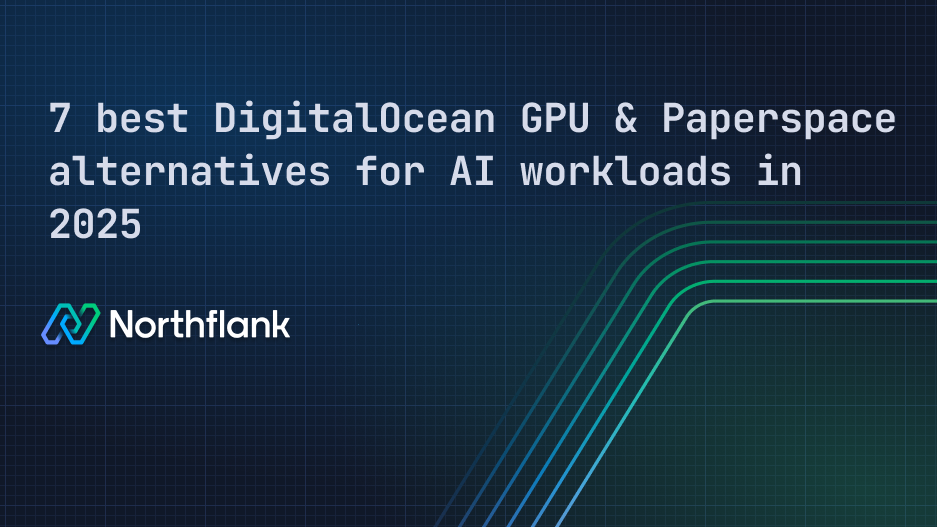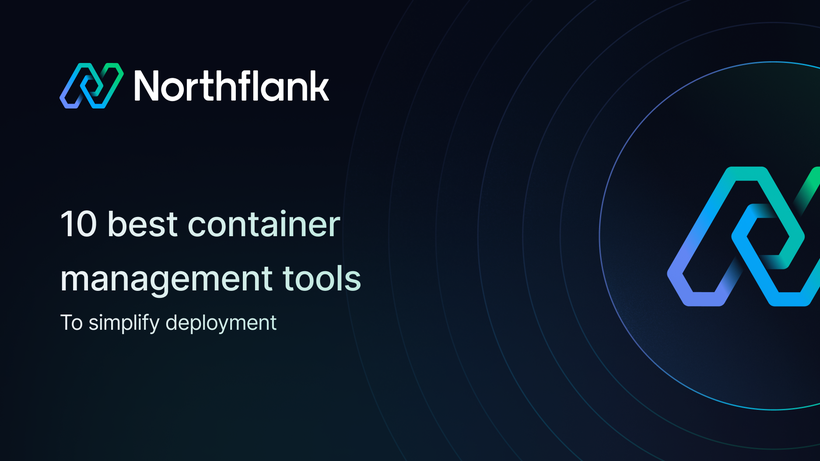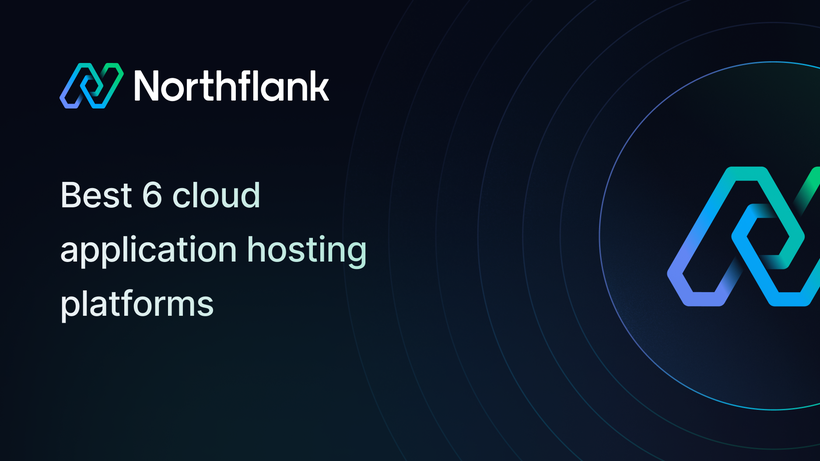

7 best DigitalOcean GPU & Paperspace alternatives for AI workloads in 2025
DigitalOcean GPU Droplets let you attach NVIDIA GPUs like A100s and L40S to cloud instances for training, fine-tuning, and inference. Paperspace, now fully part of DigitalOcean, has been integrated into the same product line as its GPU hosting solution.
This article walks through seven alternatives to DigitalOcean GPU and Paperspace for teams running AI workloads at scale. If you're looking to deploy LLMs, run fine-tuning jobs, schedule batch tasks, or support APIs, databases, and notebooks alongside your models, these platforms offer a broader approach to GPU-powered infrastructure.
If you're short on time, here’s a quick breakdown of some of the best platforms for running GPU workloads beyond what DigitalOcean and Paperspace provide:
- Northflank – Full-stack GPU platform with support for BYOC (Bring Your Own Cloud), secure multi-tenant runtime, built-in CI/CD, job scheduling, and full workload orchestration.
- RunPod – Good for fast GPU inference and launching model templates. Limited infrastructure features.
- Lambda Cloud – High-performance GPUs for training workloads. No orchestration or platform-level services.
- Modal – Function-first platform for AI developers. Not built for full-service deployment or persistent workloads.
- Baseten – Inference-focused platform with model autoscaling and chaining. No GPU provisioning or BYOC.
- AnyScale – Ray-native infrastructure for distributed AI jobs. Suited to advanced orchestration use cases.
- Vast.ai – Spot GPU marketplace with low pricing. Minimal orchestration and limited isolation for production use.
Northflank supports AI workloads like LLMs, notebooks, APIs, and fine-tuning jobs - all on your own cloud or with fast GPU provisioning.
Migrating from another platform? If you're moving GPU workloads and have specific capacity or availability requirements, request GPU capacity here.
DigitalOcean’s GPU Droplets and Paperspace make it easy to get started with GPU instances. They’re simple to spin up, SSH-friendly, and work well for individual training jobs or quick experiments.
Once you move beyond standalone training jobs and start building production-grade systems, with background tasks, model APIs, or secure, multi-user environments, you’ll likely need capabilities these platforms don’t cover out of the box. Some of them include:
- Manual GPU setup required on DigitalOcean, including drivers and runtime environments
- No shared volume support across multiple Droplets (limits multi-instance coordination)
- Paperspace has limited global presence with only three data center regions
- GPU availability can be restricted during peak usage due to quotas on higher-end models
- No BYOC support or deeper deployment tooling such as full-stack orchestration or built-in CI/CD
If you're deploying complete AI applications rather than running isolated training jobs, these platforms may start to feel restrictive.
That’s where platforms like Northflank provide more room to grow:
- Unified support for GPUs, APIs, background jobs, and databases
- Bring Your Own Cloud (BYOC), spot GPU provisioning, and secure container runtimes
- Built-in CI/CD, job orchestration, and notebook templates
- Enterprise-ready features like RBAC, audit logs, and private networking
Rather than manually piecing everything together, Northflank gives you the tooling and infrastructure needed to ship AI workloads from day one.
GPU access is only one piece of the stack. As AI workloads become increasingly complex, teams like yours need platforms that can support everything around the GPU, from infrastructure orchestration to developer workflows.
Below are a few things to look for when evaluating alternatives to DigitalOcean GPU and Paperspace:
- Full workload support: Beyond inference, you’ll likely need to run APIs, background jobs, vector databases, Redis, Postgres, and notebooks in the same environment. Platforms like Northflank support deploying these services alongside your GPU-powered workloads in a single project.
- Secure multi-tenant runtime: For teams running AI agents or sandboxed code, security boundaries are vital. Platforms that isolate workloads at the container level, like Northflank, help prevent cross-tenant access and runtime vulnerabilities.
- Bring Your Own Cloud (BYOC): Running GPU workloads across different cloud providers gives you flexibility to manage cost, avoid vendor lock-in, and select the hardware you need (e.g., mixing A100s and H100s). Northflank supports BYOC deployments and hybrid GPU setups with fast provisioning.
- Support for notebooks, fine-tuning, and long-running jobs: If you’re running interactive notebooks, fine-tuning models, or GPU-backed workers that need to stay alive for hours, the platform should support both persistent and scheduled workloads. Northflank handles these natively with workload templates and job orchestration.
- CI/CD and GitOps integration: To manage complex deployments and collaborate across teams, look for platforms that integrate with your CI pipelines and Git workflows. Northflank supports both push-to-deploy and GitOps-based flows out of the box.
- Enterprise controls: Role-based access control (RBAC), audit logs, private networking, and cost attribution are essential when building internal tools or managing multi-user environments. These features are already available on platforms like Northflank and are critical for AI teams working at scale.
If you’re comparing alternatives, here’s a quick breakdown of top platforms. Some are best for cheap GPU access or serverless jobs, while others go beyond raw compute to support full-stack AI applications
| Platform | Best For | Why It Stands Out |
|---|---|---|
| Northflank | LLMs, APIs, GPUs, and full-stack AI infrastructure | Unified support for GPU + non-GPU workloads, CI/CD, secure runtimes, BYOC, and databases |
| RunPod | Fast inference on diffusion, LLaMA, Whisper | Templates for popular models, spot pricing, quick GPU access |
| Lambda | On-demand or dedicated GPU compute | SSH access, strong training performance, flexible pricing |
| Modal | Async jobs, Python-first workflows | Function-based compute model, easy to use, great for batch or scheduled jobs |
| Baseten | Serving and chaining pre-trained models | Simple deployment and autoscaling, but less infra control |
| AnyScale | Ray-based distributed compute | Great for fine-tuning and RLHF workflows at scale |
| Vast.ai | Lowest-cost GPU spot pricing | Peer marketplace with great pricing, but no orchestration or secure isolation |
These are seven platforms that go beyond basic GPU hosting. They provide the infrastructure, orchestration, and flexibility AI teams need to run full workloads at scale.
Northflank makes it easy to deploy GPU workloads alongside the rest of your stack. There’s no need for separate tooling or isolated environments. You can run notebooks, fine-tuning jobs, APIs, and background workers in the same project.

What you can run with GPUs on Northflank:
- Jupyter notebooks
- Fine-tuning jobs (e.g. PyTorch, DeepSpeed)
- LLM inference endpoints (e.g. LLaMA, Mistral)
- Batch jobs and long-running processes
Full-stack infrastructure beyond GPU execution:
- Deploy Postgres, Redis, vector databases, and RabbitMQ alongside your model services
- Run APIs, background workers, and supporting tools in the same environment
- CI/CD pipelines and GitOps support built-in
Built for flexibility and control:
- BYOC (Bring Your Own Cloud) support to connect your own GPU infrastructure across clouds
- GPU marketplace for fast provisioning
- Secure runtime to isolate untrusted or AI-generated code
- Templates for Jupyter, PyTorch, and LLaMA (deployable via UI or Git)
Enterprise-ready features:
- Role-based access control (RBAC)
- Audit logs and cost attribution by project
- Private clusters
- SOC 2 compliance roadmap (with Vanta/SecureFrame integration coming)
Go with this if you need to deploy full AI applications that include models, APIs, and services, on secure, scalable infrastructure.
RunPod offers one-click deployment for GPU-powered containers, making it quick to start inference workloads. Templates are available for common AI models like Stable Diffusion, LLaMA, and Whisper, and you can also deploy custom Docker containers with a few clicks.

Key features:
- Prebuilt templates for vision, audio, and LLM workloads (e.g. Stable Diffusion, Whisper, LLaMA)
- Flexible GPU pricing, including on-demand and spot instances with potentially up to 60–80% savings
- API access and webhooks for managing containers programmatically
Limitations:
- Optimized for inference and experimentation, not full app infrastructure
- No built-in support for deploying supporting services like Postgres, Redis, or background workers
- Lacks integrated CI/CD pipelines and multi-service orchestration
Read more in our guide: RunPod alternatives for AI/ML deployment
Go with this if you want fast, cost-effective GPU inference without managing additional infrastructure.
Lambda provides on-demand access to high-end NVIDIA GPUs like H100, A100, and A6000 for teams focused on large-scale model training. The Lambda cloud is designed for speed, raw compute power, and simplicity, making it ideal for training and experimentation without the need for additional orchestration.

Key highlights:
- Multiple GPU types: Access H100, A100 (SXM or PCIe), A10, GH200, A6000, V100, and more
- Flexible configurations: Run single-GPU VMs or multi-GPU clusters with 1, 2, 4, or 8 GPUs
- Preconfigured environments: One-click Jupyter and instances with CUDA/cuDNN preinstalled
- Minute-level billing: Pay only for what you use, with no egress fees
- API access: Manage instances programmatically via Lambda’s API
Where it’s limited:
- The Lambda cloud is focused on unmanaged compute only**;** you won’t find built-in support for APIs, databases, CI/CD pipelines, or multi-service orchestration
- No BYOC or hybrid deployment options
Go with this if your priority is access to raw compute power for training large models, without needing infrastructure or platform services around it.
Modal is a serverless platform that lets you run GPU-powered jobs as Python functions, abstracting away infrastructure management so developers can focus on code. It's designed for simplicity and scalability, especially for batch inference, data processing, and scheduled GPU tasks.

Key features:
- Function-first interface: Write Python functions and deploy them directly to GPU-enabled containers
- Auto-scaling execution: Functions scale based on demand; Modal handles provisioning and scaling
- Scheduled and event-driven tasks: Support for cron jobs, webhooks, and API-triggered executions via functions
- Managed infrastructure: Handles container orchestration and underlying resource management
Limitations to be aware of:
- Does not support long-running or persistent services beyond individual function executions
- Lacks built-in support for databases, APIs, or multi-service orchestration
- No BYOC option; Modal manages all infrastructure
For deeper comparison, see 6 best Modal alternatives for AI/ML deployment.
Go with this if you want a serverless-like GPU workflow for functions or batch tasks, without running full applications or persistent services.
Baseten is designed to make production-grade AI model deployment frictionless. It focuses on inference, offering managed GPU provisioning, autoscaling, and multi-step orchestration, everything you need to serve ML models at scale without worrying about infrastructure.

What Baseten does well
- Model serving with autoscaling: Automatically scales between zero and your max replica count, letting your model handle spikes in traffic and scale down to save costs.
- Inference Stack: Includes low-latency, high-throughput runtimes using optimized kernels like TensorRT; routing, metrics, and performance built in.
- Chains for mini workflows: Enables multi-model pipelines and chained logic under a single endpoint.
- Integration and observability: Offers API/CLI/SDK interfaces, Prometheus-compatible metrics, and observability out of the box .
Where it’s limited
- Baseten handles GPU provisioning and inference orchestration, but it does not provide BYOC, nor does it allow deployment of full-stack services (no Postgres/Redis/API containers).
- Custom infrastructure, like private networking or CI/CD pipelines, must be managed externally.
For a deeper comparison, check out our post on Baseten alternatives for AI/ML model deployment.
Go with this if you’re deploying pre-trained or fine-tuned models with autoscaling and workflow chaining, and don’t need infrastructure customization.
AnyScale is a managed platform built around Ray, designed to help you develop, scale, and deploy distributed AI applications with minimal infrastructure overhead.

What AnyScale enables:
- Ray-native clusters: Provision and manage clusters effortlessly, supporting Python-first workflows across clouds and accelerators.
- Auto-scaling & fault tolerance: Clusters automatically scale based on workload demands, with built-in retries and recovery.
- RayTurbo performance: Runs on an enhanced version of Ray designed for maximum GPU utilization and efficiency.
- Tooling & ecosystem integrations: Includes hosted development workspaces, monitoring, support for cron-like scheduling, and APIs, integrating natively with frameworks like Tune, RLlib, and Serve.
Limitations for smaller teams:
- Steeper learning curve due to Ray’s distributed programming model.
- Not built for managing non-Ray services, e.g., databases, APIs, or microservices.
- No built-in support for BYOC; all infrastructure remains within AnyScale’s managed environment.
See more in AnyScale alternatives for AI/ML model deployment.
Go with this if your team uses Ray and needs distributed compute with advanced orchestration across GPUs and nodes.
Vast.ai is a decentralized marketplace that connects users with distributed GPU providers, from hobbyists to data centers, offering significantly lower pricing compared to traditional cloud providers.

What makes Vast.ai stand out:
- Spot and on-demand GPUs: Rent GPUs at up to ~3–5× lower cost via interruptible spot instances or higher-priority on-demand options.
- Global provider network: Users can filter by GPU type, performance (via dlperf), RAM, CPU, and security level.
- Flexible interfaces: Choose from the web UI, a Python CLI, or REST API to launch containers or VMs with SSH or Jupyter support.
Trade-offs to consider:
- Built as a compute marketplace, Vast.ai doesn't provide built-in orchestration, secure runtimes, or managed services like APIs, databases, or CI/CD.
- Isolation is handled via unprivileged Docker containers, but there’s no guarantee of cross-tenant security unless you choose trusted providers or enable single-tenant options**.**
Go with this if cost is your top concern, you’re comfortable managing infrastructure directly, and you can tolerate the limited orchestration and security trade-offs.
Most GPU platforms focus on one thing: serving models. However, if you're building full AI applications, those with APIs, scheduled jobs, databases, or background workers, raw compute isn't enough.
You’ll need a platform that can support:
- Secure multi-tenant environments for generated code
- Job orchestration across notebooks, fine-tuning tasks, and inference
- CI/CD pipelines and Git-based deployments
- Postgres, Redis, and other supporting services
Northflank brings all of this together. You can deploy GPU workloads like LLMs and fine-tuning jobs alongside your full stack, with CI/CD, logs, networking, RBAC, and audit trails already in place.
Run secure, production-grade GPU workloads → Try Northflank

